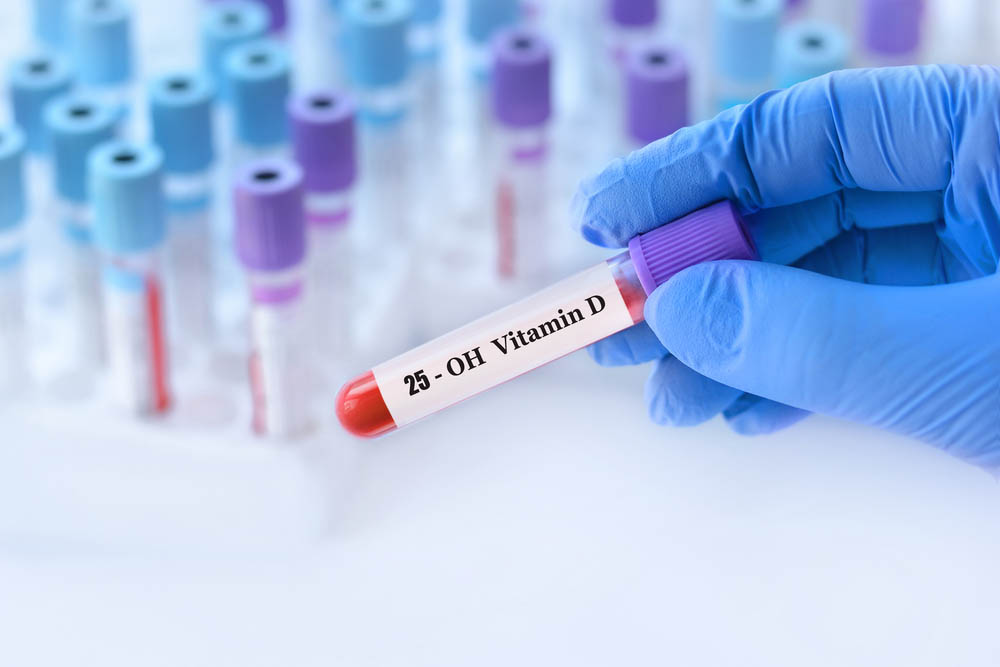Despite the common knowledge that vitamin D helps in maintaining overall health and well-being, a lot of people are not aware of their vitamin D levels.
With the 25-hydroxy vitamin D test, your doctor can evaluate your vitamin D levels and guide you with what to do based on your results.
What is a 25-hydroxy vitamin D test?
A 25-hydroxy vitamin D test is a diagnostic procedure used to measure the levels of vitamin D in your body. It’s a simple blood test that indicates whether you have sufficient, insufficient or deficient levels of vitamin D.
Upon knowing the results, you can work with your healthcare provider in addressing any deficiencies or excesses and understanding the implications of vitamin D levels on overall health.
Reasons for testing
There are several reasons to conduct a 25-hydroxy vitamin D test, including:
- Assessing your vitamin D levels
- Monitoring your risk for deficiency
- Identifying high-risk individuals
- Evaluating treatment effectiveness
- Helping in the diagnosis of related health conditions
One of the primary purposes of the test is to assess vitamin D levels in your body, so your healthcare provider can determine if there’s a deficiency or excess in your body.
Monitoring the risk for deficiency is another key reason for conducting the test. Vitamin D deficiency is a common issue, especially among the following:
- Older adults
- People with limited sun exposure
- Those with certain health conditions that affect vitamin D absorption
For those who are taking vitamin D supplements or undergoing other forms of treatment for deficiencies, regular testing can help determine if the treatment is working effectively or if adjustments need to be made.
Lastly, vitamin D deficiency has been linked to various health issues, including:
- Autoimmune diseases
- Certain cancers
- Heart disease
By testing vitamin D levels, healthcare providers can help identify potential underlying causes or contributors to these conditions, which can lead to more targeted treatment and management strategies.
How is the 25-hydroxy vitamin D test performed?
The procedure for the test is relatively simple and involves a blood sample being taken from a vein in the arm.
Before the test, your healthcare provider will determine the timing and duration of the blood draw, which can usually be done in their office or at a laboratory.
In some cases, an in-home kit may be provided for convenience, but the accuracy of these tests may vary.
What do 25-hydroxy vitamin D test results mean?
If you take the 25-hydroxy vitamin D test, expect to receive your results after a few hours to a few days.
Though different laboratories may use slightly different reference ranges to determine vitamin D status, in general, here’s how your vitamin D levels are interpreted:
- Normal range: Between 20 ng/mL and 50 ng/mL
- High range: Above 50 ng/mL
- Toxic range: Above 200 ng/mL

When evaluating the results, your healthcare provider will consider your vitamin D levels in relation to your specific health condition and risk factors, especially that vitamin D deficiency can be caused by different factors, such as:
- Inadequate diet
- Digestion issues
- Lack of sun exposure
If the results indicate a deficiency or insufficiency, your doctor may recommend vitamin D supplementation or treatment. If your deficiency is accompanied by bone pain, you may be recommended to undergo a bone density scan to further investigate their condition.
On the other hand, if your vitamin D levels are too high, they may suggest adjusting or stopping supplement intake.
Risks of a 25-hydroxy vitamin D test
The benefits of a 25-hydroxy vitamin D test outweigh any potential harm or risks.
Like other test procedures that involve drawing blood from the arm, the risks include:
- Excessive bleeding at the site where the blood sample is taken
- Lightheadedness or dizziness during or after the procedure, in rare cases
- Infection, in extremely rare cases
Before taking the test, inform your healthcare provider if you have any bleeding disorders or are taking blood-thinning medications, as these factors may increase the risk of complications.
What is the normal range?
The normal range for vitamin D levels is considered to be between 20 ng/mL and 50 ng/mL. This range is used to determine an individual’s vitamin D status. Any level below this is classified as deficient, while level above 50 ng/mL is considered high.
How to increase vitamin D
Here are the most effective strategies that you can implement to increase vitamin D.
First is through sun exposure. It’s recommended to expose large areas of skin, such as the arms and legs, to sunlight for about 10 to 15 minutes a day. However, balance sun exposure with skin protection to avoid the harmful effects of UV radiation.
Consuming foods rich in vitamin D can also help increase levels. Include these foods in your diet:
- Fatty fish like salmon, mackerel and tuna
- Fortified dairy products
- Egg yolks
Lastly, when both aren’t sufficient, vitamin D supplements can help in meeting your daily requirements. If you decide to do this, consult with your healthcare provider to determine the appropriate dosage and form of supplementation based on individual needs.
Key takeaway
The 25-hydroxy vitamin D test is a valuable diagnostic tool for assessing and monitoring your vitamin D levels. This simple and minimally invasive procedure provides quick results and allows your healthcare provider to offer appropriate recommendations for supplementation or treatment.






















































